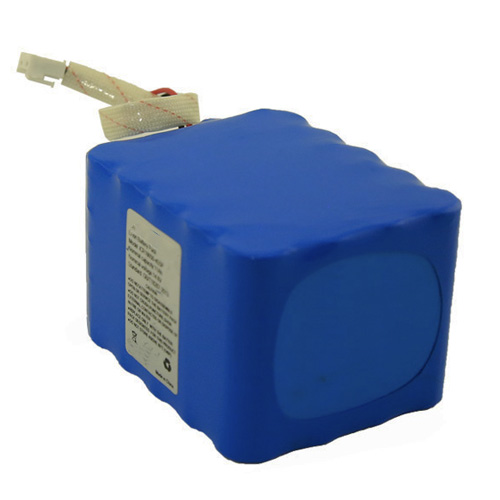In today’s fast-paced world, mobility is not just a luxury but a necessity. As the demand for transportation grows, so does the need for efficient and sustainable energy sources. This is where lithium-ion battery systems come into play, offering innovative solutions to power the vehicles of tomorrow. In this comprehensive guide, we delve into the latest innovations in lithium-ion battery systems that are revolutionizing mobility, paving the way for a greener and more accessible future.
Empowering Mobility: Innovations in Lithium-Ion Battery Systems
Electric vehicles (EVs) have gained significant traction in recent years as the world seeks to reduce its carbon footprint and combat climate change. Central to the success of EVs are advancements in lithium-ion battery technology, which have led to longer range, faster charging times, and enhanced safety features.
High-Energy Density Batteries
One of the most significant breakthroughs in lithium-ion battery technology is the development of high-energy density batteries. These batteries offer increased storage capacity within the same form factor, allowing electric vehicles to travel greater distances on a single charge. With higher energy density, EVs can rival the range of traditional gasoline-powered vehicles, making them a more viable option for long-distance travel.
Fast-Charging Solutions
The advent of fast-charging solutions has addressed one of the major concerns associated with electric vehicles: charging time. New technologies enable EVs to recharge their batteries significantly faster, reducing downtime and improving the overall convenience of electric transportation. With rapid charging stations becoming more widespread, drivers can top up their batteries in a matter of minutes, making long journeys more feasible than ever before.
Solid-State Batteries
Solid-state batteries represent the next frontier in lithium-ion battery technology, offering improved safety, energy density, and longevity compared to traditional liquid electrolyte batteries. By replacing the flammable liquid electrolyte with a solid material, solid-state batteries are inherently safer and less prone to thermal runaway events. Additionally, they exhibit higher energy density, allowing for greater storage capacity within the same volume. With their potential to revolutionize the EV industry, solid-state batteries are garnering significant attention from manufacturers and researchers alike.
Thermal Management Systems
Effective thermal management is crucial for optimizing the performance and lifespan of lithium-ion batteries. Innovations in thermal management systems have led to more efficient heat dissipation, ensuring that batteries operate within their optimal temperature range. By maintaining stable temperatures, these systems enhance battery longevity and safety, mitigating the risk of overheating and thermal runaway. As a result, EVs equipped with advanced thermal management systems can deliver consistent performance under varying environmental conditions.
Silicon Anode Technology
Silicon has emerged as a promising alternative to graphite for lithium-ion battery anodes, offering higher energy density and improved cycling stability. Silicon anode technology allows for greater lithium-ion storage capacity, enabling EVs to travel farther on a single charge. Moreover, silicon’s abundance and low cost make it an attractive candidate for mass production, driving down the overall cost of electric vehicles. With ongoing research efforts focused on enhancing the performance and durability of silicon anodes, this technology holds immense potential for reshaping the future of electric transportation.
Vehicle-to-Grid Integration
Vehicle-to-grid (V2G) integration enables electric vehicles to serve as mobile energy storage units, contributing to grid stability and resilience. By leveraging bidirectional charging capabilities, EVs can discharge excess energy back to the grid during peak demand periods, helping to alleviate strain on power generation infrastructure. Conversely, vehicles can draw electricity from the grid during off-peak hours when renewable energy sources are abundant and electricity prices are low. V2G technology not only maximizes the utilization of renewable energy but also provides a potential revenue stream for EV owners, incentivizing widespread adoption of electric vehicles.
AI-Powered Battery Management Systems
Artificial intelligence (AI) is revolutionizing the way lithium-ion batteries are managed and optimized for performance. AI-powered battery management systems utilize machine learning algorithms to analyze real-time data and predict battery behavior, ensuring optimal charging and discharging cycles. By adapting to individual driving patterns and environmental conditions, these systems maximize battery efficiency and longevity, enhancing the overall ownership experience for EV owners. With continued advancements in AI technology, battery management systems are poised to become even more sophisticated, further improving the performance and reliability of electric vehicles.
Flexible and Conformable Batteries
Traditional lithium-ion batteries are rigid and inflexible, limiting their applicability in certain vehicle designs. However, recent advancements in flexible and conformable battery technology have overcome this limitation, enabling seamless integration into various form factors. These bendable batteries can be molded to fit the contours of vehicles, allowing for more efficient use of space and greater design flexibility. Whether incorporated into curved surfaces or embedded within structural components, flexible batteries offer new possibilities for vehicle electrification, opening doors to innovative design concepts and enhanced aerodynamics.
Recyclability and Sustainability
As the adoption of electric vehicles continues to rise, so does the importance of battery recyclability and sustainability. Manufacturers are investing in research and development efforts to optimize battery recycling processes and minimize environmental impact. By reclaiming valuable materials such as lithium, cobalt, and nickel, recycled batteries can help reduce the reliance on virgin resources and alleviate supply chain constraints. Additionally, advancements in sustainable battery chemistries, such as lithium iron phosphate (LFP), are reducing the environmental footprint of lithium-ion batteries, making them a more eco-friendly choice for transportation electrification.
Conclusion
In conclusion, the innovations in lithium-ion battery systems are poised to revolutionize mobility, offering efficient and sustainable solutions for transportation electrification. From high-energy density batteries to AI-powered management systems, these advancements are driving the transition towards a cleaner and greener future. By embracing these technologies, we can empower mobility and pave the way for a more sustainable and accessible transportation ecosystem.
